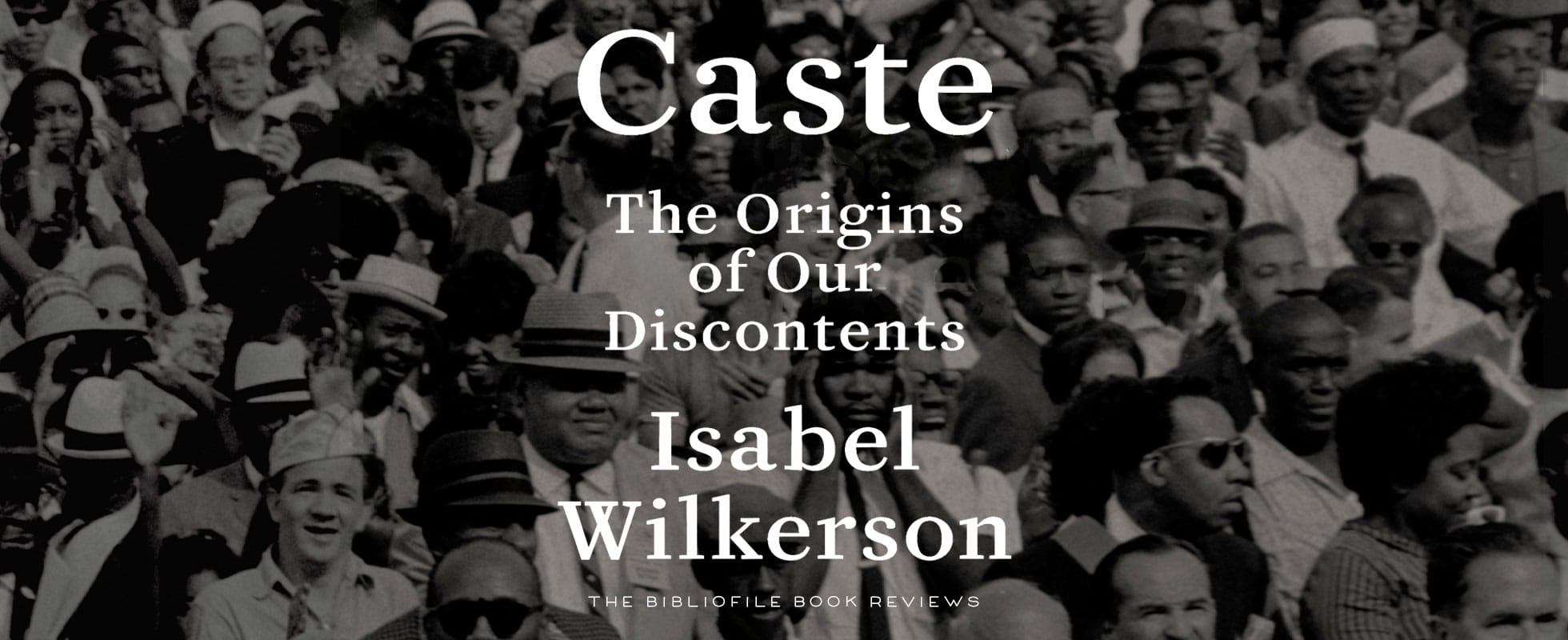Book review, full book summary and synopsis for Caste by Isabel Wilkerson, a masterful book about American's unseen caste system.
Synopsis
Caste: The Origins of Our Discontents is an examination of how race has shaped America. It also explains how our system of social stratification by race is actually a caste system, as seen in comparisons with the two other major caste systems -- Indian caste system and the one seen in Nazi Germany. Only by understanding these origins and the systemic implications of our caste system can we set a course to move this country forward.(The Full Plot Summary is also available, below)
Book Summary & Key Ideas
Chapter-by-Chapter SummarySee the Chapter-by-Chapter Summary of CasteKey Ideas and TakeawaysHistory of Caste in America
History of Enslavement. America begins bringing over African captives in the early 1600s to deal with their "labor" problem, after being unable to successfully enslave the Native Americans (who are exiled instead). The caste system takes form as enslavement continues for the next 250 years, but even as slavery is abolished, systems of laws are passed to keep the social organization in place. Meanwhile, as other immigrants arrive they find places within the caste hierarchy based on their proximity to the dominant caste.
The Old House Metaphor. Wilkerson compares being an American to buying an old house, where whatever issues the house has must be dealt with by the current occupant, even though you didn't directly cause them.
Assumptions of Caste. Under caste system, each person is assigned to roles, which carry with them histories of assumptions and labeling. (Wilkerson also explains this is terms of being placed into a container where there labels may not match the contents.)
Casteism vs Racism
Race vs Caste. While race is a fluid man-made definition, the contours of caste are rigid and fixed. What is considered "white" has changed over time, but what is considered the dominant caste has not. Throughout the book, Wilkerson intentionally tries to use term relating to caste such as "dominant caste" or "lower caste" instead of just referring to race in order to encourage readers to consider issues from a new, structurally-based light.
The Problem with the R-Word. "Racism" has become a loaded word that implies an "overt" hatred as opposed to the more subdued definition of indicating some "combination of racial bias and systemic power". As a society, we've also become too consumed with "smoking out individual racists" which is too individual and it shields other people who have committed lesser transgressions.
Casteism. Wilkerson proposes a new term, casteism, which she defines as "granting or withholding of respect, status, honor, attention, privileges, resources, benefit of the doubt, and human kindness to someone on the basis of their perceived rank or standing in the hierarchy." The term "casteism" places the focus on structural injustice.
Caste Systems of India, Nazi Germany and America
Three Major Caste Systems. The United State's system of social stratification shares similarities with the two other major caste systems in history, India's caste system (based on location and origins) and the caste system in Nazi Germany (between Aryans and Jews).
Indian Caste System. In India, the lowest caste members are the "Untouchables"/Dalits. Caste designations are based on location and is reflected in surnames as well, but can also be surmised from someone's manner of speaking, dress and comportment. Their system is reinforced by the Hindu belief in reincarnation, since it encourages compliance through the idea that a lower caste is deserved and one should obey the rules and be rewarded in the next life. While formal laws were abolished in the 1940s, the fossilized caste system persists.
Nazi Germany Caste System. Nazi elites drew inspiration for laws to create and enforce their caste system by looking at race legislation passed in America, such as miscegenation laws and rules for segregation. It resulted in the legal basis for the Aryan Nation, which evolved into the Nuremberg Laws.
The Eight Pillars of Caste (the parallels seen in the major caste systems)
Pillar #1: Divine Will. Caste systems attempt to justify their subordination of segments of their population through divine will (such as with describing African Americans as descendants of the cursed son of Noah, Canaan) or the laws of nature.
Pillar #2: Heritability. Caste is assigned at birth and passed down to descendants.
Pillar #3: Endogamy. Caste attempts to restrict marriage to those within the same caste.
Pillar #4: Purity Versus Pollution In the caste system, there is “a fundamental belief in the purity of the dominant caste and the fear of pollution” from lower castes.
Pillar #5: Occupational Hierarchy. Caste systems rest upon a bottom tier which performs menial tasks whose labor supports the other castes.
Pillar #6: Dehumanization and Stigma. Dehumanization distances the lower caste and allows their treatment to be “outside of the norms of humanity”.
Pillar #7: Terror and Cruelty. Terror and cruelty are used to enforce caste and control the subservient caste, and being complicit or joining in are rewarded.
Pillar #8: Inherent Superiority Versus Inherent Inferiority In each caste system, message about the inherent superiority of the dominant caste and the inferiority of the lower castes are continually reinforced.
How Caste Affects Those Within It
Bottom Caste as a Scapegoat. The bottom caste is often treated as a "scapegoat" caste where all the ills and crimes of society as a whole can be attributed to it. This is seen in blaming crime on African Americans as a whole and the treatment of African Americans as individuals within the criminal justice system.
Burden of Inherent Superiority. The dominant caste being told they are inherently superior which gives them a sense of “psychological security”. However, disruptions to the social order can therefore create an existential threat to its members ("dominant status group threat"). There is also a psychological burden to being convinced of your inherent superiority, since "downward mobility" is a fear, equality can seem like being downgraded and it can create false expectations.
Retribution for Advancement. Lower caste members who are able to rise above their station often face retribution because "lower caste success" is the greatest threat to the caste system. Instead, lower caste members who reinforce their own subjugation are the ones that can reap rewards.
Stockholm Syndrome. The caste system demands that lower caste members be mindful of the needs of the dominant caste. This includes extending “compassion even when none is forthcoming in exchange”. This can be seen in many instances of black people being asked and encouraged to forgive white people for crimes, and it fuels a lot of viral "feel-good" content. Wilkerson describes it as an example of how being subordinate means having “to be twice as good”, but still only “seen as half as worthy”.
Physiological Implications of Caste. There are real health implications caused by discrimination, as seen in all marginalized groups. Cell damage caused by stress can be measured according to the length of telomeres (biological markers of aging). A buildup of unhealthy (“visceral”) fat and increased inflammation is also seen in these same groups.
The Obama Presidency and the Politics of Caste
The Obama Presidency. Despite many declaring the Obama presidency as marking the "end of racism" in America, a majority of white voters did not vote for him. Additionally, it sparked a crisis for the caste system by threatening the centrality of white dominance.
The Trump Presidency. Contrary to many liberals saying that working class white voters are "voting against their interest", Wilkerson contends that upholding the caste system promotes their longer-term goal of dominance (a status that has historically afforded them land, advantage, self-esteem, etc.), even if it was a subconscious assessment.
Political System. Politicians treat their bases in ways that are consistent with caste. Conservatives proudly rally their white bases, while Democrats are less enthusiastic about their base (possibly taking them for granted). They expend much effort trying to appeal to white voters at the margins, which reinforces white centrality.
A World Without Caste
Symbols of Caste. Nazi Germany serves as an example of how it's possible to work to dismantle the system. In addition to forbidding symbols of caste, the country has no Nazi monuments and continues to pay reparations.
The Price We Pay. In upholding the caste system, the United States pays a steep price, increasing rivalry and distrust in the country. For example, we are reluctant to extend benefits such as healthcare to its citizens out of fear of allowing lower castes to have access to those things.
Epilogue. In closing, Wilkerson reminds the reader that each person has a role to play in dismantling the caste system, by resisting its dictates.
For more detail, see the full Chapter-by-Chapter Summary.
If this summary was useful to you, please consider supporting this site by leaving a tip ($2, $3, or $5) or joining the Patreon!




Hi, this book sounds fascinating and I shall order it, thanks so much for your detailed description. It might illuminate Brazil – I’m a British journalist, now mostly retired, and lived 15 years in Brazil, finding the reality of the racial scenery very different from that vaunted, in all manner of everyday ways but also, if you look at a photo of Congress sitting today, it looks like 80% European-descent olive-skinned men, a sprinkling of women but still probably more than anyone brown or black. I have only just discovered your site and think it’s wonderful, will use it as a guide from now on. Find I agree with you on the two books I’ve read – the Tara Westover (although I loved that, with no quibbles at all) and Ann Patchett. Thank you for a fabulous resource.